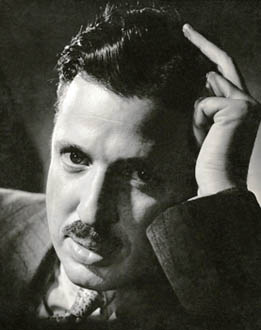Product Description
Donald Deskey, Papier-Abfälle, Gelatin silver print, c.1925-30


DONALD DESKEY (1894-1989) USA
Papier-Abfälle c.1925-30
Provenance: The Estate of Donald Deskey
H: 9 7/8” x W: 7 15/16”
Framed: H: 22” x W: 18”
Donald Deskey was a native of Blue Earth, Minnesota. He studied architecture at the University of California, but did not follow that profession, becoming instead an artist and a pioneer in the field of Industrial design. In Paris he attended the 1925 Exposition Internationale des Arts Décoratifs et Industriels Modernes, which influenced his approach to design. He established a design consulting firm in New York City, and later the firm of Deskey-Vollmer (in partnership with Phillip Vollmer) which specialized in furniture and textile design. His designs in this era progressed from Art Deco to Streamline Moderne.
He first gained note as a designer when he created window displays for the Franklin Simon Department Store in Manhattan in 1926. In the 1930's, he won the competition to design the interiors for Radio City Music Hall. In the 1940's he started the graphic design firm Donald Deskey Associates and made some of the most recognizable icons of the day. He designed the Crest toothpaste packaging, as well as the Tide bullseye. His company is still in operation in Cincinnati. A collection of his work is held by the Cooper-Hewitt, National Design Museum. He is regarded the American pioneer of industrial design, and contemporary American graphic design.
Donald Deskey, Papier-Abfälle, Gelatin silver print, c.1925-30
WOLFGANG GESSL (b. 1949) Austria / Sweden
Cone Teapot 1996 (designed 1995)
Hand wrought and hand hammered silver cone shaped covered pitcher form with a green PVC handle and spout over silver cylindrical arching forms
Marks: Wolfgang Gessl (script impressed signature), WO.GE (in a rectangle), Swedish assay mark for Stockholm, 925 (silver guarantee in a rectangle), X10 (in a rectangle), 2/9 GD 452
Illustrated: Gold and Silversmith Wolfgang Gessl: Exceeding Geometry, Kerstin Wickman, p. 19.
H: 8 3/8” x W: 8 ½” x Dia base: 5 ¼”
This is No. 2 out of the edition of 9 models.
Price: $22,500
Wolfgang Gessl was born in 1949 in Vienna, Austria and trained as a goldsmith with Professor Hans Angerbauer. Upon moving to Sweden, Gessl studied under the eminent silversmith Sigurd Persson at Konstfack, the National University of Art, Craft and Design in Stockholm, Sweden.
Wolfgang Gessl has had fifteen solo exhibitions including shows at The National Museum, Stockholm and The Royal College of Art in London. His metalwork has been widely exhibited in Sweden, Europe and the U.S and his pieces can be found in many private collections throughout the world. He has taught at Konstfack for more than twenty-four years, and continues to live and work in Stockholm.
Charles Darwin published his theory of evolution with compelling evidence in his 1859 book “On the Origin of Species” overcoming scientific rejection of earlier concepts of transmutation of specie. By the 1870s both the scientific community and much of the general public had accepted evolution as a fact and awakening the public to the diversity of life. The frog emerging from Darwin’s Pond was a symbol of the times and a favorite theme for jewelry of the era.
